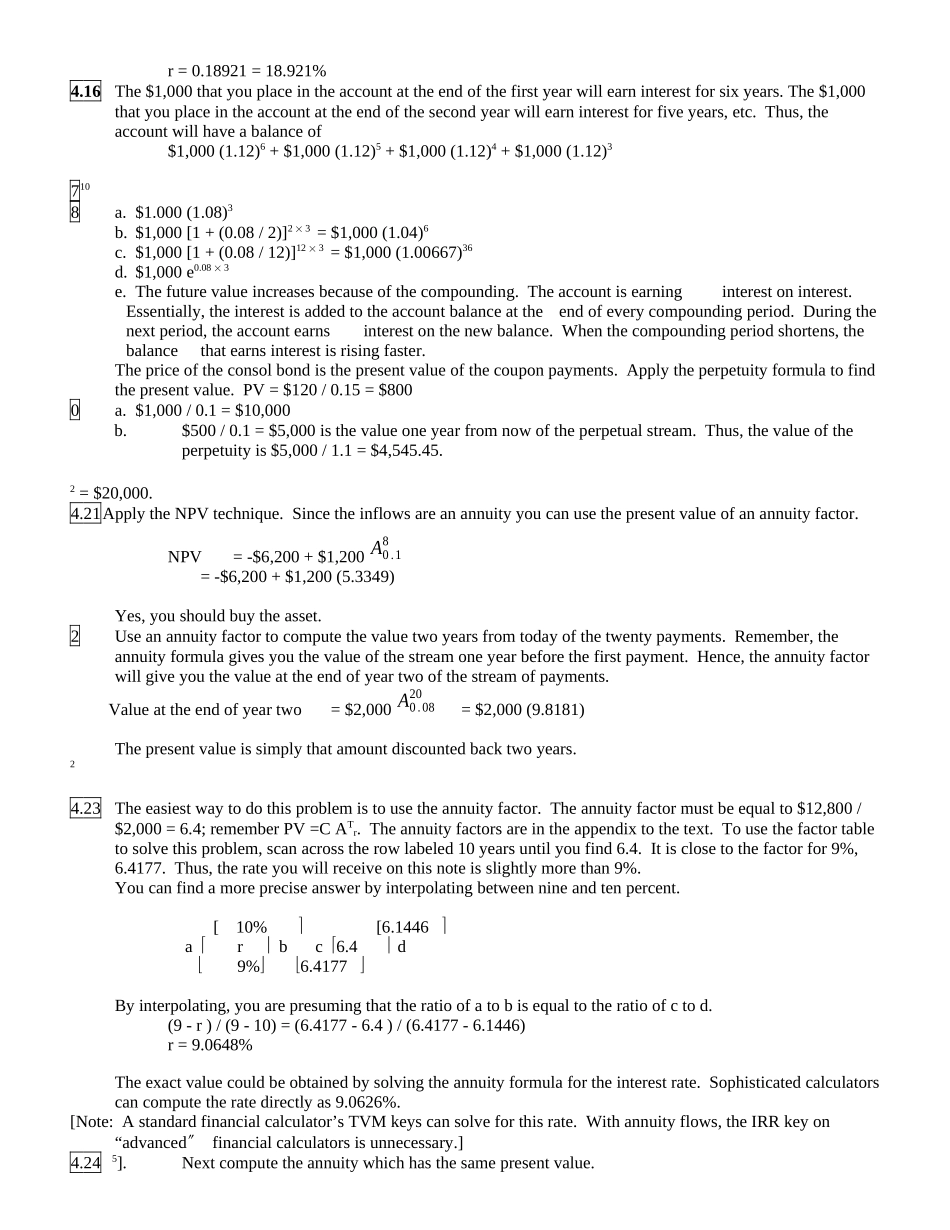Chapter 2: Accounting Statements and Cash Flow0 AssetsCurrent assetsCash$ 4,000Accounts receivable 8,000Total current assets$ 12,000Fixed assetsMachinery$ 34,000Patents 82,000Total fixed assets$116,000Total assets$128,000Liabilities and equityCurrent liabilitiesAccounts payable$ 6,000Taxes payable 2,000Total current liabilities$ 8,000Long-term liabilitiesBonds payable$7,000Stockholders equityCommon stock ($100 par)$ 88,000Capital surplus19,000Retained earnings 6,000Total stockholders equity$113,000Total liabilities and equity$128,0002.11One year agoTodayLong-term debt$50,000,000$50,000,000Preferred stock30,000,00030,000,000Common stock100,000,000110,000,000Retained earnings 20,000,000 22,000,000Total$200,000,000$212,000,0002.12Total Cash Flow of the Stancil CompanyCash flows from the firmCapital spending$(1,000)Additions to working capital (4,000)Total$(5,000)Cash flows to investors of the firmShort-term debt$(6,000)Long-term debt(20,000)Equity (Dividend - Financing) 21,000Total$(5,000)[Note: This table isn’t the Statement of Cash Flows, which is only covered in Appendix 2B, since the latter has the change in cash (on the balance sheet) as a final entry.]2.13a.The changes in net working capital can be computed from:Sources of net working capitalNet income$100Depreciation50Increases in long-term debt 75Total sources$225Uses of net working capitalDividends$50Increases in fixed assets* 150Total uses$200Additions to net working capital$25*Includes $50 of depreciation. b.Cash flow from the firmOperating cash flow$150Capital spending(150)Additions to net working capital (25)Total$(25)Cash flow to the investorsDebt$(75)Equity 50Total$(25)Chapter 3: Financial Markets and Net Present Value: First Principles of Finance (Advanced)4 $120,000 - ($150,000 - $100,000) (1.1) = $65,0003.15 $40,000...


